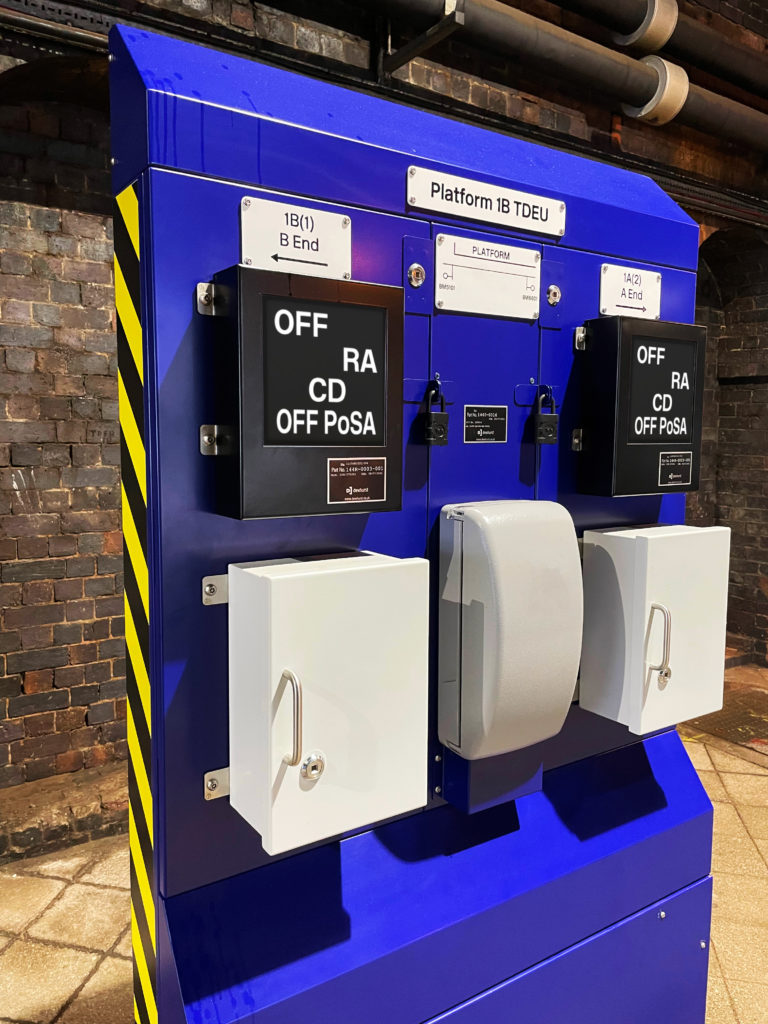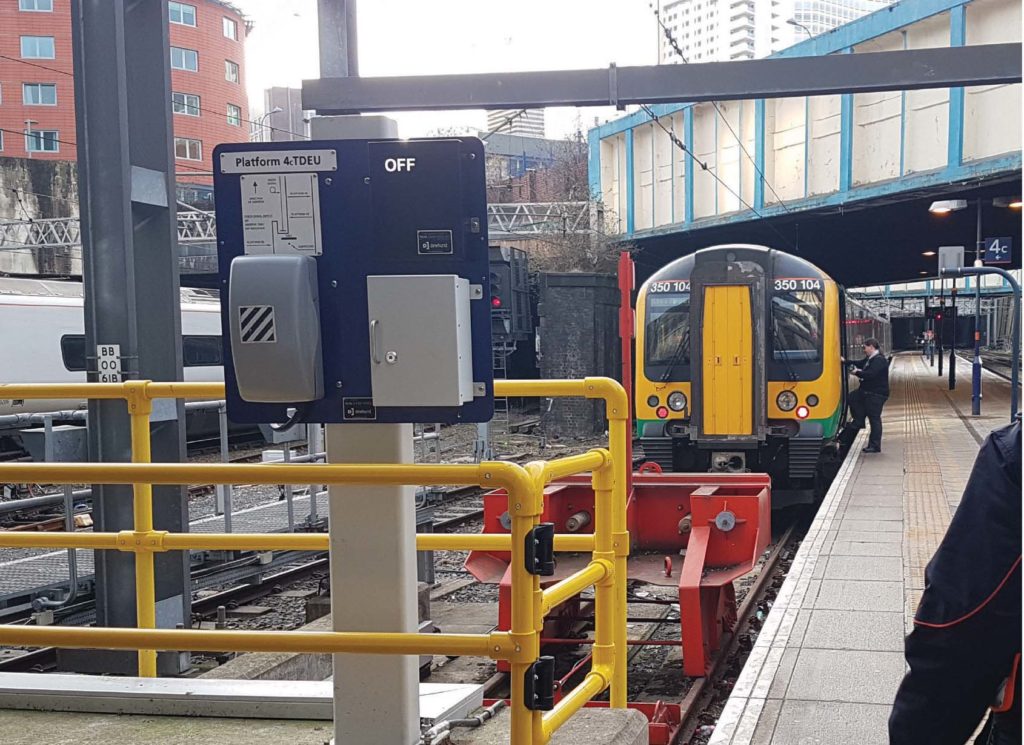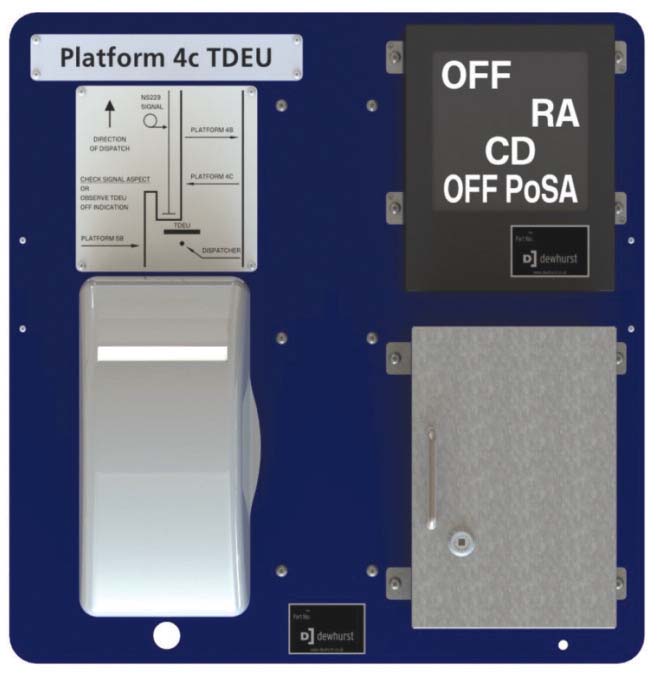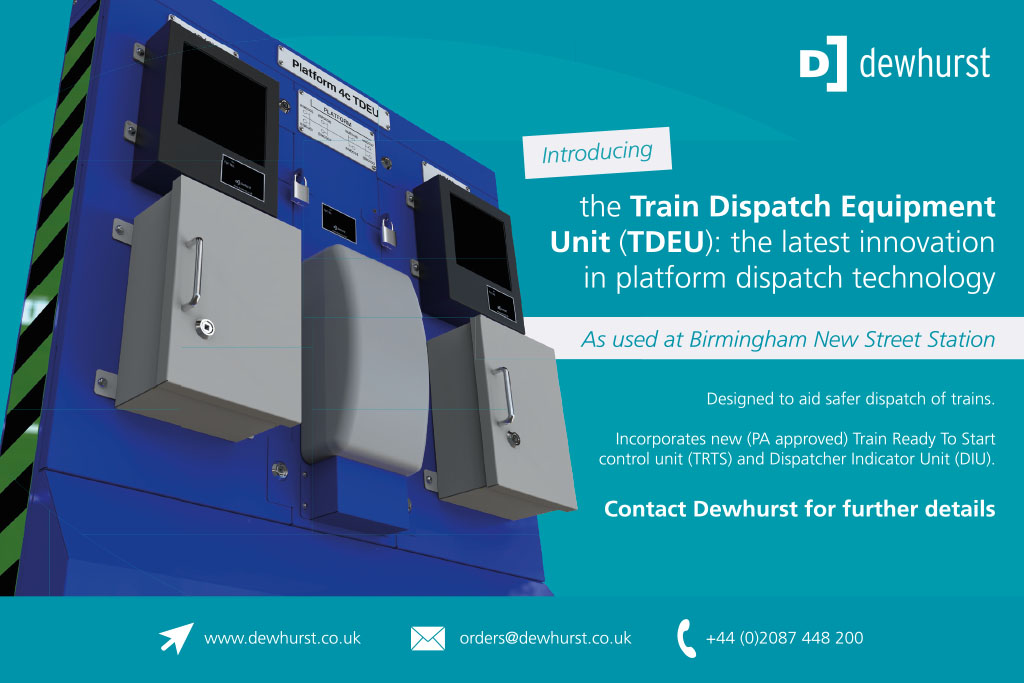Around 2016, during the early stages of the development phase for the Birmingham New Street resignalling project, attention moved to the methods the railway might use to achieve compliance for safer train dispatch processes.
As part of the ongoing important stakeholder engagement, it became clear that the industry wished to see an improvement in the train dispatch process. There are increasingly strict rules and standards surrounding the despatch of trains, to ensure that they depart the station without any safety issues for customers, staff, and services. It was therefore felt that the current technology to facilitate the process was worthy of improvement.

The prevailing tide of concerns resulting from a fatal accident at James Street station in Liverpool in 2011, was starting to point towards a system change that improved the information made available to the train dispatch or train crew on the platform. It was also felt important to centralise the task, ensuring that the primary role of viewing and monitoring the train dispatch corridor could be carried out without distraction.
This would mean the removal of distracting and potentially contradictory supporting information displayed elsewhere on the station. This pointed to a new product − a sub-system designed entirely for train dispatch, rather than one adopted from other railway train signals.
New thinking at New Street
With a blank canvas for the project to re-signal the station, came the ability to think beyond the traditional, while complying with the new and enhanced requirements around platform safety. The opportunity to provide the right product soon became an exciting one, rather than one seen as a blocker or delay to the project’s primary goals.
Birmingham New Street station is the busiest station outside of London, and the fifth busiest overall in the UK with 43 million passengers using its platforms in 2017. By the time the first Train Despatch Equipment Unit (TDEU) had been commissioned in 2019, that figure had risen to 47 million.
New Street has 12 through platforms and one bay platform. Each of the through platforms are divided into A and B portions and signalled accordingly. Operationally rather than physically, it has 25 platforms for train services. The higher number platforms, from No. 6 upwards have always suffered significant curvature, encasement of their retaining walls, and very limited visibility to the platform ends. During 2016, when the Gateway project ended, even with new cladding to make the passenger experience more enjoyable and additional CIS screens generally, the platform envelope became very cluttered.
To add further furniture for train dispatch purposes where it didn’t exist today was almost seen as a non-starter. Initial assessment of the 69 signals which would be required for the 25 platforms, very quickly displayed a need for over 100 separate OFF/RA Indicators just to comply with train dispatch. These would all need to be double-sided to aid flexible viewing from anywhere along the platforms.
Desire to improve
Lessons learned from other capital projects around the network showed that the desire to improve the train dispatch process was not unique to New Street. Feedback came from the Thameslink project team who had just completed the London Bridge station remodelling. Here, the indicators required for train despatch were orientated to face the dispatcher looking along the dispatch corridor rather than facing the platform signals. This was a definite improvement but was achieved by using new products that were not approved for this application and had not undergone the formal Product Approval process.
In a world where RAM (Reliability, Availability and Maintainability) capability, supported by Design for Reliability processes, can sometimes define a solution rather than just the more obvious end goal functionalities, it became even more clear that a product Specification was needed.
As the responsible engineer I was required to find and manage the system engineering response to these multiple issues. It was very exciting and challenging to learn that the industry wanted change and the market was supportive of finding the change solution. The sponsor of the New Street re-signalling scheme, alongside the end users, stakeholders, and asset engineers (who would be the ones managing the new system once in service), all demanded that we take this opportunity for a better train dispatch system and run with it.
In November 2016 I ran with it, supported by Dewhurst, and some like-minded engineers and operators. This is the story of what happened over the next four years and the journey to develop the new TDEU.

Engineering necessity
Signalling Engineers are excellent at providing a solution to a problem. It creates interest, provides a legacy, and is innovative. In a world that is becoming more demanding of performance rather than solution-defined, a sub-system within the railway system that performs reliably while achieving its safety requirements is one that will stand out and be taken forward.
We knew as we started to engage the market that simply picking a nice-looking, cost-effective product would not meet these performance level requirements but nothing like this existed anyway. The new product needed to be defined and it had to be measured against European standards for reliability, rather than just adapted from and then added to the new signalling system.
By the end of 2016 a manufacturer had been located who showed a desire and commitment to develop this new product design. It bode well that it had already produced similar products in the rail sector such as the Train Ready to Start Plunger Unit, in wide use by Network Rail.
Dewhurst UK, based in Feltham, Southeast London agreed to support our aims for a TDEU, integral to which would be the Dispatcher Indicator Unit (DIU). The DIU would be subject to stringent Product Approval, Design for Reliability and Trial tests for EMC, HF, IP, IK, and general environmental standards, all to be revealed later.
But what was the engineering necessity here? We didn’t want to engineer standard signals into the roof fabric on each platform. We wanted the signalling information in the Dispatcher’s eye line at the Dispatch Point. We wanted the Train Dispatcher to operate from separate objects rather than rely on those provided for the train driver. We wanted an ergonomically acceptable solution rather than a signalling engineer’s design. And we wanted to apply the lessons taken from London Bridge train dispatch solution.
Development necessity
During early discussions and the development of the specification with Network Rail’s approval parties and Dewhurst, which I led as the Product Sponsor, we carried out research around the UK rail network.
Our findings were interesting to say the least, but a personal favourite will always be the TDEU installed, presumably many years ago, at Crewe station. Here a standard catalogue of signalling parts had been brought together to achieve the same overall requirement. It brought the signal status information right to the train dispatcher. An OFF signal immediately adjacent to the TRTS. At Crewe there is no need for the dispatcher to seek out information elsewhere and so nothing to distract them from their primary tasks. Perfect.
However, back in the day we didn’t record RAM targets or safety analysis, or product approval. What this example was able to show us was that the desire has always existed to move away from signals hung from platform ceilings. This gave a strong precedence, we just needed to design the best product to achieve it.
Our first attempts at mocking up suitable product design led us to conclude that, in order to achieve acceptable levels of clarity for the indication of the signals, we would need to start with a clean sheet with regard to the product’s design.

Product specification
The majority of 2018 was spent establishing the new DIU Product Specification. It was critical that it could be used by any manufacturer seeking to use its requirements in this application. Once approved as a Network Rail Standard, Dewhurst became the first manufacturer to make provision for the specification resulting in their first DIU product demonstration in January 2019.
The headline requirements for a DIU were as follows: (i) it must be clearly visible at up to five metres, with an arc of viewing 45 degress left and right of dispatch point; (ii) it must use NR standard MIL50-15 style coupler cables; (iii) it must have had national use rather than just at New Street – all dispatch indication variants available; (iv) it must be line replaceable – any failure results in quick swop rather than on site fault finding; (v) it must be able to cater for sunlight and phantom aspect interference; and (vi) it must meet EN50121 (EMC), EN50122 (electrical safety), EN50125 (environmental) and design for reliability.
In parallel to the DIU specification preparation, the project also undertook an Ergonomics Fitting Trial using a mock-up of the equipment for the proposed TDEU. We invited a selection of the 85 trained, full time dispatch staff at New Street to undertake a trial of its operation using a simple wooden mock-up and answer questions on the layout, height, orientation, and functionality of the TDEU.
Human factors
The findings of our ergonomic engineer revealed a considerable number of the improvements that the TDEU was offering. The resulting report, accepted by all stakeholders, made the product trial easier and quicker, as the human factors had already been built into the product design by Dewhurst.
At the same time, we also sought general improvements to the existing TRTS product from Dewhurst to complement the overall TDEU trial. This included conversion to NR standard MIL50-15 style coupler cables; TRTS plunger able to alight when pressed and signalling system receives request; a lockable door using the same dispatch key for reduction of trespass incidents; and reducing the number of TRTS variants to standardise the product range.
In addition to the DIU and the TRTS, a TDEU is also intended to give clear fixed information to the user which should include the TDEU identity, which is platform and direction rather than signalling system asset numbering; and a fixed location map, to allow clear dissemination of the platform that the TDEU is dispatching for. This resulted in an engraved mimic plate and identity plate being mounted on each TDEU.

TDEU product trial
Using standard signalling design processes undertaken by the Network Rail Design Delivery team in Birmingham, a set of signalling designs were produced and accepted. This allowed the existing platform 4C TRTS with signal OFF light to be replaced by the first trial TDEU for the UK network.
Using Signal Works Testing procedures and a new approved Test Specification for the DIU, the Network Rail team commissioned the TDEU into use in the early hours of Sunday 3 February 2019.
Close monitoring of the TDEU’s performance and reliability with no reported issues, along with detailed feedback from the despatch staff using the TDEU, led to the full certificate of acceptance being granted in November 2020.
As part of the trial, and to gather a wider application of feedback, a TDEU was also commissioned at Wimbledon station to overcome a dispatch risk within the Thameslink project scope. This application, while within the original trial certificate scope was the basis of the TDEU design now used at New Street and due for commissioning in 2022.
Dewhurst is now supporting other national station improvement projects at London Moorgate, London Victoria, and the re-signalling of Macclesfield with new TDEU equipment at the centre of safety improvements for train dispatching.
Image credit: Dewhurst


